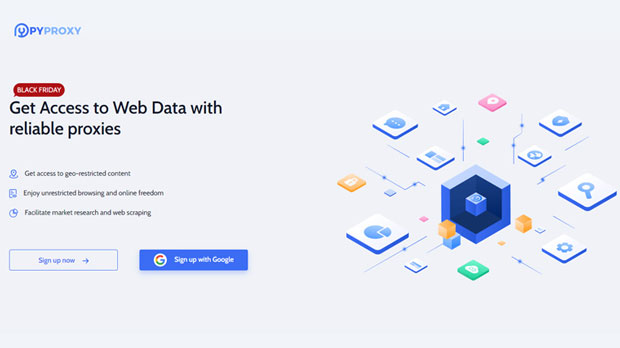The frequency of IP rotation has become a significant factor influencing network access experiences in the digital era. As businesses and individuals rely more heavily on the internet for various tasks, including browsing, data mining, and online transactions, the quality of their internet experience depends largely on how network traffic is routed. In particular, the practice of IP rotation, used to mask or change the originating IP address of a connection, has shown to both positively and negatively affect internet speed, stability, and security. This article delves into how different IP rotation frequencies impact network access performance and provides insights on optimizing this for better user experience. Understanding IP Rotation and Its Role in Network AccessIP rotation refers to the practice of periodically changing the IP address used by a device or service during network communication. Typically employed in scenarios such as web scraping, anonymity, or to avoid traffic limits imposed by websites, IP rotation helps prevent detection and blocks from the server side. This mechanism is crucial for various applications:1. Anonymity: By changing IP addresses, users can mask their true location and identity, enhancing privacy.2. Avoiding Limits: Some websites set limits on the number of requests a single IP can make, and IP rotation helps bypass these restrictions.3. Load Distribution: In some cases, IP rotation is used to distribute traffic evenly across multiple sources, which can prevent overloading a single server.However, while it serves practical purposes, the frequency at which IP addresses are rotated can have profound effects on the overall user experience.Impact of IP Rotation Frequency on Network SpeedOne of the most noticeable effects of IP rotation is on network speed. When an IP address is changed frequently, the device or application may need to re-establish connections with remote servers, which can lead to delays. Here are the main factors that influence speed:1. Connection Setup: Each time a new IP address is used, there might be a need to go through the handshake process with the server, which can cause an initial delay. Frequent rotations can increase the cumulative time spent on setting up new connections, thus affecting overall speed.2. DNS Resolution: The domain name system (DNS) lookup process may take longer when the IP address changes frequently. Some servers may also treat new IP addresses with caution, causing longer latency as the server establishes trust with the new address.3. Routing Complexity: IP rotation can change the geographical location of the network, resulting in longer routes for data packets to travel. This could impact speed due to network congestion, especially if the new IPs belong to distant or overloaded regions.In general, rotating IP addresses too often can lead to noticeable delays in speed, while minimal rotation might result in better performance. Striking a balance is essential for maintaining optimal speed without sacrificing functionality.Impact of IP Rotation on Network StabilityNetwork stability can be heavily influenced by the frequency of IP address changes. A highly stable network connection is necessary for applications such as online gaming, video streaming, or real-time communications. When the IP is rotated too frequently, it may cause:1. Connection Drops: In some cases, frequent IP rotations can cause interruptions or even complete disconnections from the network. This is particularly disruptive for long sessions or ongoing communications.2. Increased Packet Loss: Each time an IP address changes, data packets might need to be re-routed, potentially causing packet loss. Packet loss can degrade the quality of communication or streaming services.3. Session Disruptions: Services that rely on persistent connections, such as VPNs or cloud applications, may experience session disruptions when the IP changes too often. This can interfere with user activities, leading to frustration and dissatisfaction.On the other hand, IP rotation can also help maintain stability by preventing servers from overloading a single IP, providing a kind of “failover” protection. However, the trade-off is that the network might become unstable if rotations occur too often.Security Considerations of IP Rotation FrequencyWhile IP rotation is primarily viewed as a method for enhancing privacy, the frequency with which IPs are rotated can also have significant implications for network security:1. Detection and Blocking: Servers can detect patterns of frequent IP changes, especially if they are originating from suspicious locations or seem automated. This might raise red flags, and the server could start blocking the IP addresses or flagging the user for potential malicious activity.2. Anonymity Protection: A well-timed, controlled rotation of IP addresses can greatly enhance security by making it harder for third parties to track users. However, if the frequency is either too high or too low, it could make the user more susceptible to tracking via other means, such as browser fingerprints or cookies.3. Reputation of IP Pools: A frequent rotation might expose users to IP addresses that have been previously flagged or blacklisted by some websites or services. This could lead to false detection of malicious behavior and result in restrictions or bans, compromising security.In conclusion, IP rotation improves security by obfuscating the user's real IP, but the frequency must be managed carefully to avoid unwanted security risks.Optimal Frequency of IP Rotation for Network PerformanceThe key question is, what is the optimal frequency of IP rotation to ensure that users experience the best balance of speed, stability, and security? There is no one-size-fits-all answer, but here are some guidelines:1. Low Frequency (Infrequent Rotation): Ideal for applications requiring stable connections, such as online gaming or video streaming. It minimizes delays caused by re-connecting or DNS lookups. However, this setup might be ineffective in situations where anonymity or bypassing IP-based restrictions is required.2. High Frequency (Frequent Rotation): This is suited for tasks like web scraping or when a high level of anonymity is needed. While it might lead to some speed delays, it ensures that the user is less likely to be blocked. For applications where security is the highest priority, frequent IP rotation is recommended.3. Moderate Frequency: This is often the best approach for most users. Rotating IP addresses every few minutes or hours may strike the right balance, maintaining security and preventing blocking while ensuring stable performance.Ultimately, finding the optimal rotation frequency depends on the specific use case and the balance between performance and security.Conclusion: The Balance Between Performance and PrivacyIn conclusion, IP rotation is a powerful tool for enhancing privacy and bypassing restrictions, but its impact on network access cannot be overlooked. By understanding the effects of different rotation frequencies on speed, stability, and security, users can better optimize their network experience. Too frequent IP changes can lead to poor network performance and increased disruptions, while too infrequent changes can expose users to security risks. By striking a balance, it’s possible to ensure an optimal user experience with the best of both worlds—enhanced security and smooth, uninterrupted network access.The key is to evaluate specific needs—whether speed, stability, or privacy is the priority—and adjust IP rotation frequency accordingly for the best possible outcome.
Nov 12, 2025


































































